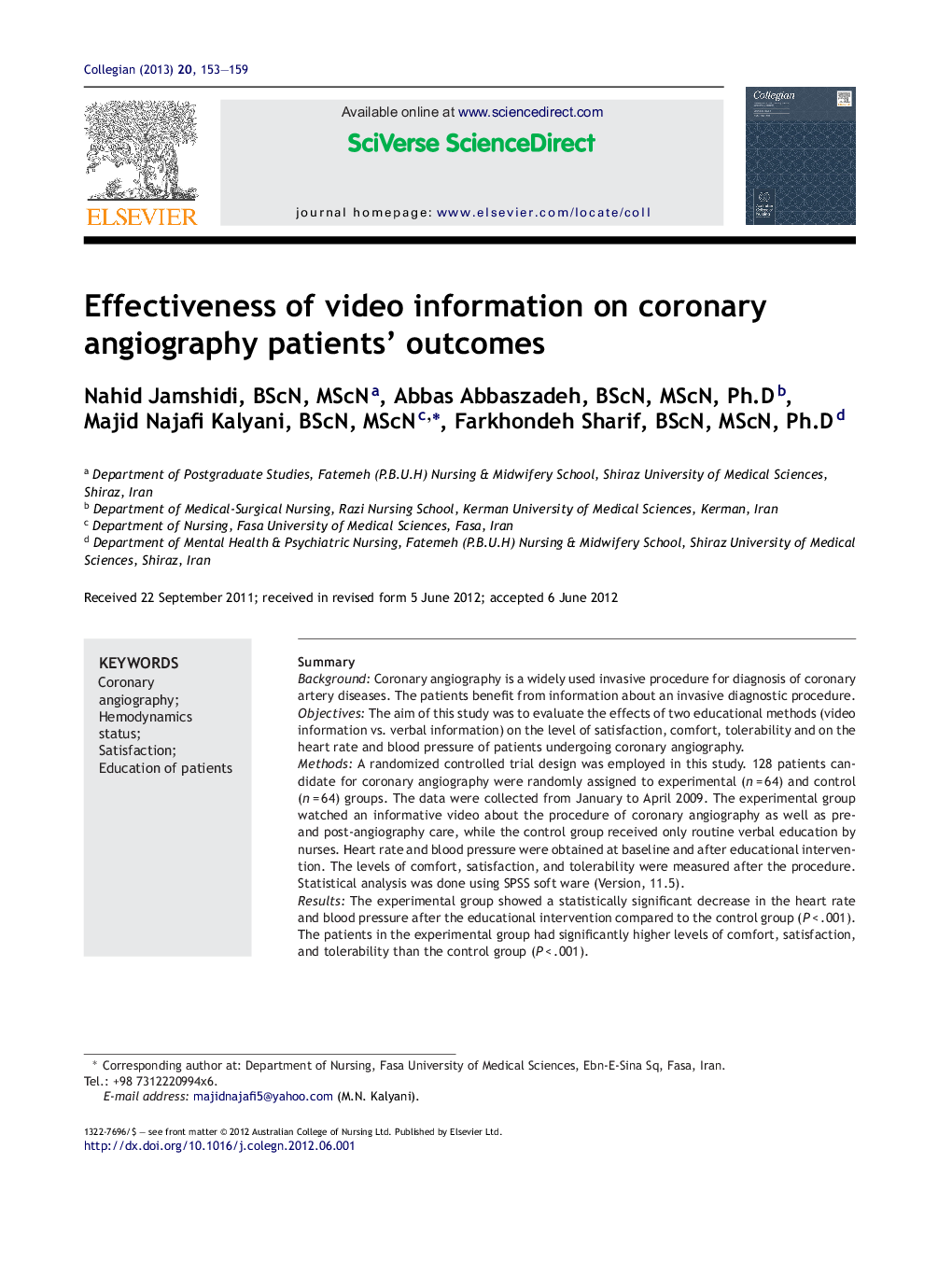| Article ID | Journal | Published Year | Pages | File Type |
|---|---|---|---|---|
| 2647396 | Collegian | 2013 | 7 Pages |
SummaryBackgroundCoronary angiography is a widely used invasive procedure for diagnosis of coronary artery diseases. The patients benefit from information about an invasive diagnostic procedure.ObjectivesThe aim of this study was to evaluate the effects of two educational methods (video information vs. verbal information) on the level of satisfaction, comfort, tolerability and on the heart rate and blood pressure of patients undergoing coronary angiography.MethodsA randomized controlled trial design was employed in this study. 128 patients candidate for coronary angiography were randomly assigned to experimental (n = 64) and control (n = 64) groups. The data were collected from January to April 2009. The experimental group watched an informative video about the procedure of coronary angiography as well as pre- and post-angiography care, while the control group received only routine verbal education by nurses. Heart rate and blood pressure were obtained at baseline and after educational intervention. The levels of comfort, satisfaction, and tolerability were measured after the procedure. Statistical analysis was done using SPSS soft ware (Version, 11.5).ResultsThe experimental group showed a statistically significant decrease in the heart rate and blood pressure after the educational intervention compared to the control group (P < .001). The patients in the experimental group had significantly higher levels of comfort, satisfaction, and tolerability than the control group (P < .001).ConclusionsPatients’ education using an informative video before coronary angiography can effectively maximize the patients’ outcome. The results of this study confirm the usefulness of video information prior to an invasive coronary angiography procedure.
